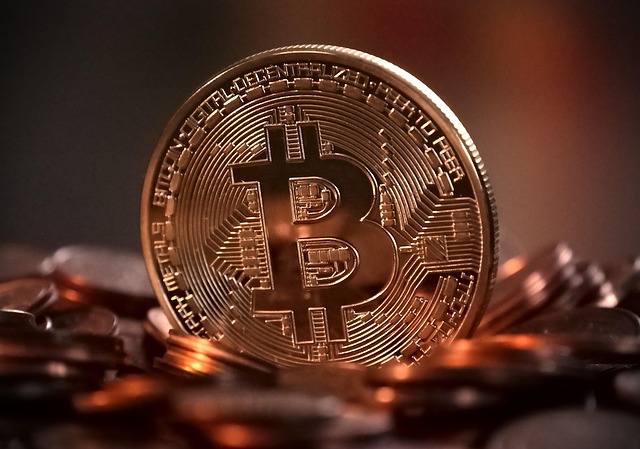Arthur Hayes loves tariffs as printed money pain is good for Bitcoin
BitMEX co-founder Arthur Hayes says US President Donald Trump’s tariffs may rattle the global economy in some ways, but that same disruption could be exactly what Bitcoin needs to rally.“Global imbalances will be corrected, and the pain papered over with printed money, which is good for BTC,” Hayes said in an April 3 X post.Several factors contribute to Bitcoin’s potential pump“Some of y’all are running scurred, but I LOVE TARIFFS,” Hayes said. His comments come just a day after it was announced that the Trump administration will hit all countries with a 10% tariff starting April 5, with some countries facing even larger rates, such as China facing a 34% tariff, the European Union 20%, and Japan 24%. Hayes explained that tariffs positively impact Bitcoin’s (BTC) price for several reasons. Bitcoin is trading at $83,150 at the time of publication. Source: CoinMarketCapOne of them, he said, is the “weakening” of the US Dollar Index (DXY), as overseas investors continue to sell off US stocks and “bring money home.” April 3 marked “the largest single-day point loss for the Nasdaq 100 in history,” according to the trading resource account The Kobeissi Letter.“The index lost a total of -1060 points and came just 1.5% away from triggering the first circuit breaker since March 2020,” The Kobeissi Letter said.”This is good for BTC and gold over the medium term.”Hayes also said that the stringent tariff placed on China may weaken the yuan (CNY). “With a 65% effective tariff levied, China could respond by allowing CNY to weaken past 8.00,” Hayes said. A weakening yuan may force the hand of Chinese investors to look at riskier assets such as Bitcoin to preserve their wealth.Meanwhile, Hayes said that “we need Fed easing,” noting that the two-year Treasury yield “dumped” following the tariff announcement. Related: Bitcoin sales at $109K all-time high ‘significantly below’ cycle tops — GlassnodeHe explained this as a signal that markets expect the Federal Reserve to cut rates and potentially restart quantitative easing (QE) to offset the negative economic impact. Fed rate cuts increase liquidity, also making riskier assets like crypto more attractive to investors.Source: Arthur HayesMeanwhile, Jeff Park, head of alpha strategies at Bitwise Invest, has long argued that Trump’s tariffs will ultimately benefit Bitcoin.He said on Feb. 3 that in a “world of weaker dollar and weaker US rates…risk assets in the US will fly through the roof beyond your wildest imagination.”“Bookmark this and revisit as the financial war unravels, sending Bitcoin violently higher,” Parks said on Feb. 3.Magazine: XRP win leaves Ripple a ‘bad actor’ with no crypto legal precedent setThis article does not contain investment advice or recommendations. Every investment and trading move involves risk, and readers should conduct their own research when making a decision.
Investor demand for XRP falls as the bull market stalls — Will traders defend the $2 support?
Between Oct. 25, 2024, and Jan. 16, 2025, XRP (XRP) had one of the best rallies of the current bull market, gaining 600% as investors piled in with the hope that a pro-crypto presidency would benefit Ripple and its cryptocurrency. During this time, the quarterly average of daily active addresses jumped by 490% and XRP price hit a 7-year high.XRP’s 1-day chart. Source: Cointelegraph/TradingViewFast forward to the present, and data shows that the speculative interest surrounding XRP is declining. Holders are increasingly facing losses rather than gains, which is dampening their risk appetite. “Retail confidence in XRP may be slipping”Since bottoming in 2022, Bitcoin (BTC) and XRP have gained 500% to 600%, but the bulk of XRP’s gains came from a parabolic price increase. Data from Glassnode shows that XRP daily active addresses jumped by 490%, whereas the same metric for Bitcoin increased by 10% over the past four months. XRP’s new investor realized the cap. Source: GlassnodeThis retail-driven surge pushed XRP’s realized cap from $30.1 billion to $64.2 billion, with $30 billion of that inflow coming from investors in the last six months. The share of XRP’s realized cap held by new investors (less than six months) jumped from 23% to 62.8%, signaling a rapid wealth shift. However, since late February 2025, capital inflows have dipped significantly. XRP realized profit/loss ratio. Source: GlassnodeThe primary reason is that investors are currently locking in fewer profits and staring at higher losses. This can be identified by the realized loss/profit ratio, which has constantly declined since 2025. Glassnode analysts said, “Given the retail-dominated inflows and largely concentrated wealth in relatively new hands, this alludes to a condition where retail investor confidence in XRP may be slipping, and this may also be extended across the broader market.”Besides weakening confidence among newer investors, the distribution of XRP among whale addresses reflects a similar trend. Data shows a steady increase in whale outflows since the start of 2025, suggesting that large holders have been consistently trimming their positions. Over the past 14 days, over $1 billion in positions were offloaded at an average price of $2.10. Whale flow 30-day moving average. Source: CryptoQuantRelated: How many US dollars does XRP transfer per day?Can XRP hold the $2 support?XRP has found support at $2 multiple times over the past few weeks, but the chance of the altcoin dropping below this level increases with each retest. XRP 4-hour chart. Source: Cointelegraph/TradingViewHowever, on the lower time frame (LTF) of the 1-hour and 4-hour charts, a bullish divergence can be observed for XRP. A bullish divergence occurs when the price forms a lower low and the relative strength index (RSI) forms a lower high. With a fair value gap between $2.08 and $2.13, XRP might see a relief rally into this range, especially if the wider crypto market undergoes an oversold bounce. On the higher time frame chart, XRP appears bearish due to the formation of an inverse head-and-shoulders pattern, with a measured target near $1.07. There is a chance that the altcoin finds support from the 200-day moving average (orange line) around the $1.70 to $1.80 mark, but XRP price has not tested this level since Nov. 5, 2024. XRP 1-day chart. Source: Cointelegraph/TradingViewRelated: Bitcoin drops 8%, US markets shed $2T in value — Should traders expect an oversold bounce?This article does not contain investment advice or recommendations. Every investment and trading move involves risk, and readers should conduct their own research when making a decision.
Bitcoin drops 8%, US markets shed $2T in value — Should traders expect an oversold bounce?
Bitcoin (BTC) and US stock markets all sold off sharply after US President Donald Trump shook up financial markets by announcing a list of reciprocal tariffs on several countries. On April 3, the S&P 500 saw a 4.2% drop at market open, its most significant single-day decline since June 2020. The Dow Jones Industrial Average fell 3.41%, to 40,785.41 from 42,225.32, while the Nasdaq Composite dropped 5.23%. Overall, $1.6 trillion in value was wiped out from US stock at the market open. Bitcoin’s value dropped by 8%, but a positive is bulls seem capable of defending the $80,000 support level. These steep declines essentially stem from uncertainty surrounding the new tariffs and amplify investors’ concerns about impending recession.Source: XData from CoinGecko suggests that the total crypto market has dropped 6.8% over the past 24 hours and it seems unlikely that a relief rally is viable in the short-term.Related: Bitcoin price risks drop to $71K as Trump tariffs hurt US business outlookCrypto liquidations soar to $573MAccording to CoinGlass, in the past 24 hours, more than 200,000 traders were liquidated, with the total amount exceeding $573.4 million. The largest liquidation occurred on Binance, with an ETH/USDT position worth $11.97 million being force closed.Total crypto liquidation chart. Source: CoinGlassMeanwhile, Bitcoin’s open interest dropped below $50 billion, reducing market leverage. Joao Wedson, CEO of Alphractal, mentioned that the liquidation heatmaps indicate heavy leverage around $80,000, raising the potential for a potential drop to $64K-$65K if Bitcoin breaks this level with high trading volume.Bitcoin liquidation maps. Source: XRelated: Trump ‘Liberation Day’ tariffs create chaos in markets, recession concernsThis article does not contain investment advice or recommendations. Every investment and trading move involves risk, and readers should conduct their own research when making a decision.
Beyond the hype: How Bitcoin stays true to its values
Bitcoin’s (BTC) journey from a radical experiment to a trillion-dollar asset has been fueled by grand narratives: Digital gold, decentralized money and an alternative financial system. Beyond the hype, how does Bitcoin remain true to its core values? That’s the central theme of the latest episode of The Clear Crypto Podcast, where hosts Nathan Jeffay and Gareth Jenkinson are joined by Charlie Spears, co-founder of Blockspace Media, to unpack Bitcoin’s evolving role in the global financial system.Bitcoin’s evolutionFrom the outset, Bitcoin was designed as a decentralized alternative to traditional money.But as adoption has surged, so too has the debate over its scalability and usability. Jenkinson began the conversation by explaining the origins of the original cryptocurrency and how that has shifted over time:“It started out as digital gold and electronic money, and it was supposed to be that. And this is why there is that shift towards scaling and different transactional capabilities that people are looking to bring onto the network.”The discussion underscores the growing importance of layer-2 solutions like the Lightning Network, which aim to make Bitcoin practical for everyday transactions by enabling users to transact in satoshis — the smallest unit of Bitcoin — rather than traditional currencies.Related: 4 key Bitcoin metrics suggest $80K BTC price is a discountBitcoin’s core principlesDebates over Bitcoin’s direction often center on its philosophical roots. Some purists argue that any modification risks altering the essence of what makes Bitcoin unique. Others see thoughtful updates as a way to reinforce its role as a global financial system. Spears compares this to interpreting historical texts: “Reading what Satoshi wrote years ago is like analyzing the words of the Founding Fathers. The world changes, and we have to decide what that means for Bitcoin today.”The discussion highlights how some proposed upgrades aren’t new but were initially removed as a precaution. Now, with Bitcoin’s maturity, developers are considering reinstating them to improve functionality. “Bitcoin is in the hands of its users,” Spears emphasizes. “We get to decide what it should be, just as much as those who were there 15 years ago.”As Bitcoin continues to evolve, The Clear Crypto Podcast cuts through the noise to deliver insightful conversations about where it’s headed next. To hear the full conversation on The Clear Crypto Podcast, listen to the full episode on Cointelegraph’s Podcasts page, Apple Podcasts or Spotify. And don’t forget to check out Cointelegraph’s full lineup of other shows! Magazine: SEC’s U-turn on crypto leaves key questions unanswered
Did ChatGPT come up with Trump’s tariff rate formula?
There’s a crazy theory on social media that US President Donald Trump’s newly announced reciprocal tariff plan — which hits all countries with a minimum 10% tariff — could have been designed by an artificial intelligence chatbot.Only a short period after Trump announced the tariffs at the White House Rose Garden on April 2, some X users claim they were able to duplicate the same tariff plan with a rudimentary prompt using OpenAI’s ChatGPT. “I was able to duplicate it in ChatGPT,” NFT collector DCinvestor told his 260,000 followers on X following the Donald Trump announcement of reciprocal tariffs on 185 countries on April 2. “It also told me that this idea hadn’t been formalized anywhere before, and that it was something it came up with,” he added, referring to the chatbot’s ability to calculate the tariff rates. “FFS. Trump admin is using ChatGPT to determine trade policy,” he added.Of course, the similarities between the artificial intelligence-generated tariff plan and Trump’s plan could also be simply coincidental.DCInvestor’s observation came in response to crypto trader Jordan Fish, also known as Cobie, who also asked ChatGPT using the prompt: “What would be an easy way to calculate the tariffs that should be imposed on other countries so that the US is on even playing fields when it comes to trade deficit. Set a minimum of 10%.” ChatGPT response to question on tariff calculations. Source: CobieJournal of Public Economics editor Wojtek Kopczuk also experimented with ChatGPT, which generated the same results. “I think they asked ChatGPT to calculate the tariffs from other countries, which is why the tariffs make absolutely no fucking sense,” he said. Author Krishnan Rohit postulated on X that this “might be the first large-scale application of AI technology to geopolitics.” ChatGPT, Gemini, Claude, and Grok all give the same answer to the question on how to impose tariffs easily, he observed. Trump’s reciprocal tariffs lead to crypto dipFounder and CEO of supply chain logistics platform Flexport, Ryan Petersen, said his firm had reverse-engineered the formula the Trump administration used to generate the reciprocal tariffs. “It’s quite simple, they took the trade deficit the US has with each country and divided it by our imports from that country,”An editor at The Yale Review, James Surowiecki, said something similar, “they just took our [US] trade deficit with that country and divided it by the country’s exports to us.”Related: ‘National emergency’ as Trump’s tariffs dent crypto pricesTrump’s reciprocal tariffs, which come into effect on April 5, have hit all countries with a 10% levy, with some nations facing even larger rates, such as China with a 34% tariff, Japan with 24%, and the European Union with 20%. Crypto markets reacted particularly badly, plunging 5% after the announcement as Bitcoin (BTC) fell by $5,500 to $82,277 before recovering marginally, according to CoinGecko. Magazine: Financial nihilism in crypto is over — It’s time to dream big again
DDoS attacks now a dominant means of waging political cyber-warfare
Distributed denial-of-service (DDoS) attacks are outpacing many traditional cyber threats and are no longer just a tool but a “dominant geopolitical weapon,” according to network security firm Netscout.Global DDoS activity increased by 12.7% in the second half of 2024 compared to the first half, totaling almost 9 million attacks, according to the firm. A DDoS attack is a malicious attempt to disrupt the normal web traffic of a targeted server, service or network by overwhelming the target or its surrounding infrastructure with a flood of internet traffic.The largest increases have been in Latin America and the Asia Pacific regions, with around 30% and 20% increases from the first half, respectively. Netscout reported that there were a total of 7.9 million DDoS attacks in the first half of 2024, with a combined total of 16.8 million for the full year, up almost 30% from the 13 million attacks the firm recorded in 2023. Attackers have been using the internet disruption tool to “exploit moments of national vulnerability to amplify chaos and erode trust in institutions,” the researchers said.The report described DDoS attacks as “precision-guided digital weapons” capable of disrupting infrastructure at critical moments, highlighting how they have been deployed during sociopolitical conflicts, elections, protests and policy disputes.Weekly DDoS statistics, 2024. Source: NetscoutAI is supercharging DDoS attacks DDoS-for-hire services, including booters and stressors, are “more powerful than ever,” they added, as cyber criminals leverage AI and automation to bypass CAPTCHA, with automation “advancing toward capabilities such as behavior mimicry and real-time attack adjustments.”The researchers concluded that DDoS attacks “are no longer just about raw bandwidth,” adding that they are “adaptive, persistent, and deeply embedded in modern cyber and geopolitical conflicts.”“The shift to high-powered enterprise infrastructure, turnkey reconnaissance, the rise of AI-enhanced automation and the expansion of DDoS-for-hire services mean that attackers are evolving faster than ever.”The role of DDoS attacks is evolving, Corero Network Security chief technology officer Ashley Stephenson told Forbes recently, adding, “By automating tasks that were once labor-intensive or required specialized skills, AI lowers the barrier to entry for attackers.”Related: Crypto crime in 2024 likely exceeded $51B, far higher than reported: ChainalysisA DDoS attack targeted Elon Musk’s social media platform X in August, aimed at disrupting his interview with then-presidential candidate Donald Trump. X was targeted again in March when a massive cyberattack prevented some users from accessing the platform. A hacking group with ties to Russia called “Dark Storm” claimed responsibility for the DDoS attack on Musk’s platform, claiming that it was not politically motivated. Magazine: Financial nihilism in crypto is over — It’s time to dream big again
Coreum: How a 7,000 TPS Blockchain Is Shaping the Future of Regulated Finance
A new report by Cointelegraph Research explores Coreum’s role in institutional blockchain adoption. It analyzes the project’s technical architecture, compliance framework and its potential impact on regulated asset tokenization. The report presents insights into transaction efficiency, security mechanisms and crosschain interoperability. It also evaluates how Coreum fits into the evolving financial landscape.Blockchain evolution and institutional requirementsThe adoption of blockchain technology by financial institutions has been increasing in lockstep, with the value locked in tokenized real-world assets (RWA). The latter grew by 85% in 2024. Our report examines how third-generation blockchains, such as Coreum, are addressing the challenges of scalability, regulatory compliance and interoperability. Improvements in the infrastructure on the base layer will lead to more seamless institutional adoption in the future.Read the full version of the report for free here.Coreum is structured to support applications that require predictable transaction costs, regulatory oversight and seamless integration with financial infrastructure. Network data indicates that Coreum achieves a transaction throughput in excess of 7,000 TPS and a time to finality of about 1.2 seconds. This positions Coreum well in a crowded and highly competitive layer-1 blockchain landscape. Coreum integrates most of its compliance features at the protocol level, a critical factor for institutional adoption. The network includes onchain KYC and AML monitoring in collaboration with AnChain.ai, an AI-driven compliance provider. This is unlike conventional blockchains, where compliance tools are third-party application-layer software. Coreum puts compliance at its foundation together with real-time risk assessment and fraud detection.Decentralized exchange (DEX) and institutional trading infrastructureOur report also analyses Coreum’s decentralized exchange (DEX) infrastructure. While many layer-1 blockchains rely on liquidity pools, Coreum features a built-in onchain order book. There are important differences between the models. Coreum’s order book DEX allows for deterministic trade execution with minimal slippage, which makes it well-suited for institutional trading strategies. In contrast, AMM-based DEXs rely on liquidity pools that sometimes lead to price inefficiencies and higher exposure to impermanent loss. Coreum’s DEX architecture also supports high-frequency trading, with transaction processing speeds comparable to traditional financial exchanges.A notable aspect of Coreum’s DEX is its advanced API, which enables integration with institutional trading systems. The API is designed to provide low-latency access to order book data, market execution tools and automated trading strategies. This infrastructure allows financial firms and market makers to integrate Coreum’s DEX into their existing trading workflows. It ensures compliance with industry standards and benefits from blockchain-based settlement efficiencies.Read the full version of the report for free here.Interoperability and network connectivityCoreum’s interoperability strategy includes connections with the XRP Ledger (XRPL) and the Cosmos/IBC network. These integrations enable crosschain liquidity and asset transfers, which creates support for financial applications that require seamless movement between blockchain ecosystems. This integration allows institutional users to leverage XRPL’s efficiency in payments and Cosmos’ modular interoperability framework with over 100 connected chains. The ability to interact with multiple networks without sacrificing security or compliance aligns with institutional requirements for blockchain adoption.Conclusion: Networks designed for institutional adoption will need to address compliance, scalability and interoperability challenges. Coreum’s technical structure and regulatory considerations provide a case study for how blockchain networks may evolve to meet these requirements. With its deterministic fee structure, built-in compliance framework and high-speed trading infrastructure, Coreum represents an example of how third-generation blockchains are positioning themselves at the intersection of crypto and regulated financial markets.Read the full version of the report for free hereDisclaimer. This article does not contain investment advice or recommendations. Every investment and trading move involves risk, and readers should conduct their own research when making a decision.This article is for general information purposes and is not intended to be and should not be taken as legal or investment advice. The views, thoughts, and opinions expressed here are the author’s alone and do not necessarily reflect or represent the views and opinions of Cointelegraph.Cointelegraph does not endorse the content of this article nor any product mentioned herein. Readers should do their own research before taking any action related to any product or company mentioned and carry full responsibility for their decisions.
Avalanche stablecoins up 70% to $2.5B, AVAX demand lacks DeFi deployment
Avalanche saw a significant surge in stablecoin supply over the past year, but the onchain deployment of this capital points to passive investor behavior, which may be limiting demand for the network’s utility token.The stablecoin supply on the Avalanche network rose by over 70% over the past year, from $1.5 billion in March 2024, to over $2.5 billion as of March 31, 2025, according to Avalanche’s X posMarket capitalization of stablecoins on Avalanche. Source: AvalancheStablecoins are the main bridge between the fiat and crypto world and increasing stablecoin supply is often seen as a signal for incoming buying pressure and growing investor appetite.However, Avalanche’s (AVAX) token has been in a downtrend, dropping nearly 60% over the past year to trade above $19 as of 12:31 pm UTC, despite the $1 billion increase in stablecoin supply, Cointelegraph Markets Pro data shows.AVAX/USD,1-year chart. Source: Cointelegraph Markets Pro“The apparent contradiction between surging stablecoin value on Avalanche and AVAX’s significant price decline likely stems from how that stablecoin liquidity is being held,” according to Juan Pellicer, senior research analyst at IntoTheBlock crypto intelligence platform.Related: Bitcoin can hit $250K in 2025 if Fed shifts to QE: Arthur HayesA “substantial portion” of these inflows consists of bridged Tether (USDT), the research analyst told Cointelegraph, adding:“This seems as inactive treasury holdings rather than capital actively deployed within Avalanche’s DeFi ecosystem (at least for the time being). If these stablecoins aren’t being used in lending, swapping, or other DeFi activities that would typically drive demand for AVAX (for gas, collateral, etc.), their presence alone wouldn’t necessarily boost the AVAX price”The AVAX token’s downtrend comes during a wider crypto market correction, as investor sentiment is pressured by global uncertainty ahead of US President Donald Trump’s reciprocal import tariff announcement on April 2, a measure aimed at reducing the country’s estimated trade deficit of $1.2 trillion.Related: Michael Saylor’s Strategy buys Bitcoin dip with $1.9B purchase70% chance for crypto market to bottom by June: Nansen analystsNansen analysts predict a 70% chance that the crypto market will bottom in the next two months leading into June as the ongoing tariff-related negotiations progress and investor concerns are alleviated.“Once the toughest part of the negotiation is behind us, we see a cleaner opportunity for crypto and risk assets to finally mark a bottom,” Aurelie Barthere, principal research analyst at the Nansen crypto intelligence platform, told Cointelegraph.Both traditional and cryptocurrency markets continue to lack upside momentum ahead of the US tariff announcement.BTC/USD, 1-day chart. Source: Nansen“For the main US equity indexes and for BTC, the respective price charts failed to resurface above their 200-day moving averages significantly, while lower-lookback price moving averages are falling,” wrote Nansen in an April 1 research report. Magazine: Bitcoin ATH sooner than expected? XRP may drop 40%, and more: Hodler’s Digest, March 23 – 29
Sony Electronics Singapore accepts USDC payments through Crypto.com
Sony Electronics Singapore, a subsidiary of the Japanese tech giant Sony, has recently announced that it will now be accepting USDC (USDC) stablecoin payments through an integration with Crypto.com. This move marks a significant step towards mainstream adoption of cryptocurrency as a means of payment for everyday goods and services.
According to Chin Tah Ang, the general manager of Crypto.com Singapore, this partnership with a well-established and forward-thinking brand like Sony Electronics Singapore will raise awareness of the simplicity and convenience of using crypto for payments. This is just one of the many high-profile partnerships that Crypto.com has been able to secure, including a recent collaboration with Deutsche Bank to provide corporate banking services across Asian-Pacific markets.
The acceptance of stablecoin payments by the Singaporean Sony subsidiary may be the start of a new trend in the region. In late February, it was reported that Metro, a publicly listed department store chain in Singapore, has enabled its customers to pay for products using stablecoins like Tether’s USDt. This follows January reports that Singapore has become a key destination for Web3 companies, issuing twice as many crypto licenses in 2020 as in the previous year.
Singapore’s approach to crypto regulation, which focuses on protecting investors and making it easy for new crypto firms to interact with local banking partners, has made it a global champion of blockchain technology. In fact, a study published at the end of 2020 ranked Singapore as the top jurisdiction for blockchain based on patents, jobs, and exchanges.
This emerging trend towards crypto adoption in Singapore is further evidenced by the efforts of the crypto-friendly digital bank Singapore Gulf Bank, which is seeking a fund injection of at least $50 million to acquire a stablecoin payments company in 2021. Additionally, a recent study revealed that Singapore is not only a leader in blockchain technology, but also in the adoption of cryptocurrency, with a high percentage of the population owning or using digital assets.
As Singapore continues to pave the way for crypto adoption and innovation, it is clear that the country is becoming a major hub for the industry. With its progressive approach to regulation and partnerships with established brands like Sony, Singapore is poised to become a leader in the global crypto landscape.
UK trade bodies ask government to make crypto a ‘strategic priority’
Several British trade associations have asked Prime Minister Keir Starmer’s office to appoint a special envoy dedicated to crypto and for a dedicated action plan for digital assets and blockchain technology.In a March 31 letter, the coalition of six UK digital economy trade bodies urged Starmer’s special adviser on business and investment, Varun Chandra, for a “greater strategic focus and alignment to deliver investment, growth and jobs” for the crypto industry. The group, which consisted of the UK Cryptoasset Business Council, Global Digital Finance, The Payments Association, Digital Currencies Governance Group, the Crypto Council for Innovation and techUK, noted the US policy shift on crypto under President Donald Trump and his appointment of a crypto czar.Britain’s commitment to an economic trade deal focused on technological cooperation with the US “presents a significant opportunity to mirror the United States’ ambition in fostering leadership in blockchain, digital assets, and other emerging financial technologies,” the letter stated. The group recommended that the UK appoint a blockchain special envoy, similar to the US, to coordinate policy, foster innovation, and position the country competitively in global markets.The trade bodies also called for the development of a dedicated government action plan for crypto and blockchain technology, including a concierge service to attract high-potential firms.They added that the government should acknowledge and leverage the commonalities between blockchain, quantum computing and artificial intelligence technologies, including potential applications for government services.Another recommendation was to create a high-level industry-government-regulator engagement forum to ensure informed decision-making and cross-sector collaboration.The UK crypto and tech associations lobbying the government for a policy shift. Source: LinkedIn“With deep pools of talent, access to capital, world-class academic institutions, and sophisticated regulators, the UK provides an environment where digital assets and blockchain innovation can thrive,” they stated. Related: UK should tax crypto buyers to boost stock investing, economy, says bankerThe coalition argues that crypto and blockchain technology could boost the UK economy by 57 billion British pounds ($73.6 billion) over the next decade, with the sector potentially increasing global gross domestic product by 1.39 trillion pounds ($1.8 trillion) by 2030.Tom Griffiths, the co-founder and managing partner of crypto compliance advisory firm BitCompli, said in response to the letter on LinkedIn that the Financial Conduct Authority “has a lot of talent and a good sight of future plans, but the UK is definitely losing pace with Dubai, Singapore, and other EU jurisdictions.”“Now is the time for the FCA to act, or the UK will lose out on this huge opportunity, which is digital assets and all the benefits this sector can bring, not only now but over the next 20 years,” he added.Magazine: Bitcoin ATH sooner than expected? XRP may drop 40%, and more: Hodler’s Digest, March 23 – 29










